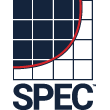179.art
SPEC CPU2000 Benchmark Description File
Benchmark Name
179.art
Benchmark Author
Charles Roberson & Max Domeika
Benchmark Program General Category
Image Recognition/Neural networks
Benchmark Description
The Adaptive Resonance Theory 2 (ART 2) neural network is used to recognize
objects in a thermal image. The objects are a helicopter and an airplane.
The neural network is first trained on the objects. After training is
complete, the learned images are found in the scanfield image. A window
corresponding to the size of the learned objects is scanned across the
scanfield image and serves as input for the neural network. The neural
network attempts to match the windowed image with one of the images it has
learned.
Description of ART 2
The ART 2 neural network models several characteristics of organic neural
processing that is not modelled in more traditional Feed Forward Neural
Networks(FFNN). In brief, ART 2 neural networks offer the following
advantages over traditional FFNN:
-
Expectation influences inputs - The past learnings of an ART 2 neural
network influence the matching process.
-
Creates own classifications - During training, the ART 2 neural network
does not need explicit output information; it creates its own
classification groups.
-
Learns on-the-fly - ART 2 neural networks are capable of learning and
classifying at the same time. The benchmark does not use this feature of
ART 2 neural networks.
-
Contrast enhancement - ART 2 neural networks perform constrast
enhancement through a series of normalizations in the dynamical system.
Input Description
The training files consist of a thermal image of a helicopter and an
airplane. The scanfile is a field of view containing other thermal views of
the helicopter and airplane.
Output Description
The output data consists of the confidence of a match between the learned
image and the windowed field of view. In addition, each F2 neuron's
output is printed. After the entire field of view is scanned the field of
view with the highest confidence of being a match is output.
Programming Language
ANSI C
Known portability issues
None
Reference
C. W. Roberson, "Design Extensions To Adaptive Resonance Theory Neural
Networks," Master's Project, Clemson University(1994).
M.J. Domeika, C.W. Roberson, E.W. Page, and G.A. Tagliarini, "Adaptive
Resonance Theory 2 Neural Network Approach To Star Field Recognition,"
in Applications and Science of Artificial Neural Networks II, Steven K.
Rogers, Dennis W. Ruck, Editors, Proc. SPIE 2760, pp. 589-596(1996).
G.A. Carpenter and S. Grossberg, "ART 2: Stable self-organization of
pattern recognition codes for analog input patterns," Applied Optics,
26, pp. 4919-4930(1987).
Last Updated: 12 October 1999




